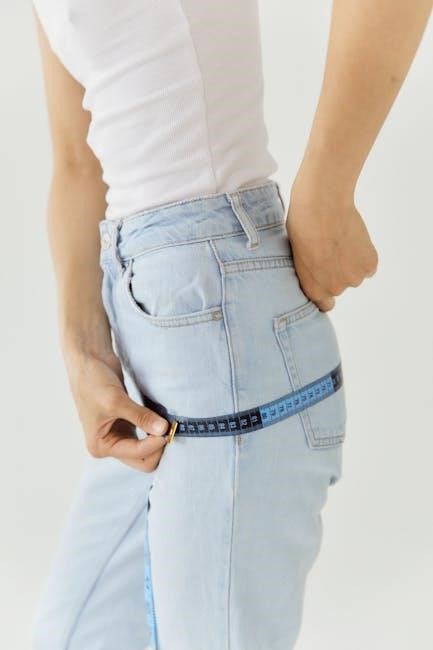Choosing the right wakeboard size is crucial for optimal performance and comfort. This guide helps riders select the perfect board based on weight‚ riding style‚ and other key factors.
Importance of Choosing the Right Wakeboard Size
Selecting the correct wakeboard size is essential for performance‚ control‚ and safety. A board that is too small may lack stability‚ while one that is too large can be difficult to maneuver. Proper sizing ensures optimal pop‚ edge hold‚ and responsiveness‚ enhancing your riding experience. It also reduces the risk of fatigue and improves progression. Manufacturer-specific size charts and weight recommendations provide guidance‚ but personal riding style and preferences should also be considered. Investing time in choosing the right size guarantees a more enjoyable and effective ride‚ whether you’re a beginner or an advanced rider. Always consult detailed sizing information for accuracy;
Factors Affecting Wakeboard Size Selection
Wakeboard size selection is influenced by rider weight‚ height‚ and riding style. Weight is a primary factor‚ as it determines how the board sits in the water and its responsiveness. Lighter riders may prefer shorter boards for easier control‚ while heavier riders need longer boards for stability. Riding style also plays a role; aggressive riders benefit from stiffer‚ longer boards‚ while casual riders may opt for shorter‚ more maneuverable options. Height can affect board length and width‚ ensuring comfort and proper foot placement. Additionally‚ manufacturer-specific charts and Mondopoint sizing for bindings help tailor the fit to individual needs‚ ensuring optimal performance.
Wakeboard Size Charts
Wakeboard size charts provide a general guide based on rider weight and height. They include metric and manufacturer-specific options‚ ensuring the best fit for individual needs and preferences.
General Wakeboard Size Chart (Metric)
A general wakeboard size chart in metric units provides a helpful guide for selecting the right board length based on rider weight. Wakeboard length (cm) and rider weight (kg) are closely correlated to ensure optimal performance. For example‚ a rider weighing less than 40 kg typically uses a wakeboard shorter than 133 cm‚ while riders between 41-68 kg opt for 133-137 cm boards. Heavier riders‚ weighing 59-82 kg‚ prefer 138-142 cm boards‚ and those over 77 kg often choose longer boards (143 cm and above). This chart serves as a starting point‚ but individual preferences and riding styles may influence the final choice. Always consider these factors for the best fit.
Manufacturer-Specific Size Charts (e.g.‚ Slingshot‚ Ronix)
Manufacturers like Slingshot and Ronix provide detailed size charts tailored to their specific wakeboard models. These charts often include precise weight and length recommendations‚ ensuring a perfect fit for riders. Slingshot’s size guide‚ for instance‚ suggests wakeboard lengths based on rider weight in kilograms‚ with options ranging from under 133 cm for lighter riders to over 142 cm for heavier riders. Similarly‚ Ronix offers model-specific sizing‚ catering to diverse riding styles and preferences. These charts are essential for making informed decisions‚ as they account for unique board designs and performance features. Always consult the manufacturer’s chart for your chosen model to maximize your wakeboarding experience;
Weight and Riding Style
Weight determines buoyancy and stability‚ while riding style influences board length and width for optimal performance. Both factors are crucial for selecting the right wakeboard size.
How Weight Influences Wakeboard Size
Your weight is a primary factor in determining the ideal wakeboard size. Lighter riders require shorter boards for better control‚ while heavier riders need longer boards for stability and buoyancy. A general guideline suggests wakeboard lengths increase with rider weight: under 40 kg (88 lbs) may prefer boards under 133 cm‚ while riders over 82 kg (180 lbs) may opt for boards 143 cm or longer. Proper sizing ensures the board sits correctly in the water‚ providing optimal performance. Always consult manufacturer-specific charts‚ as recommendations vary slightly by brand and model. Balancing weight with riding style ensures the best fit for your needs.
Riding Style and Its Impact on Board Size
Your riding style significantly impacts the ideal wakeboard size. Aggressive riders who perform advanced tricks often prefer shorter boards for quicker turns and easier maneuvers. In contrast‚ cruiser riders who focus on stability and speed may opt for longer boards. Freestyle riders benefit from medium lengths‚ balancing maneuverability and pop. The board’s responsiveness and flexibility should align with your skill level and preferences. Riders prioritizing comfort and ease may lean toward slightly longer boards‚ while those seeking precision control favor shorter options. Always consider how your riding style interacts with weight and board length for the best fit and performance.

Kids’ Wakeboard Size Guide
Children as young as three can start wakeboarding‚ but choosing the right size is essential for safety and fun. Boards for kids are designed with smaller lengths and softer flex to accommodate their smaller frames and developing skills. The size chart for children’s wakeboards typically ranges from 119 cm to 134 cm‚ catering to riders under 85 lbs. Key features include adjustable bindings‚ rounded edges‚ and lighter constructions to ensure comfort and control. Parents should consult specific manufacturer size charts to find the perfect fit for their child’s weight and height‚ ensuring a positive and enjoyable learning experience on the water.
Size Chart for Children’s Wakeboards

A child’s wakeboard size depends on their weight and height. For riders under 40 kg‚ a board length of less than 133 cm is recommended. Those weighing between 41-68 kg should opt for 133-137 cm boards. Heavier children‚ up to 82 kg‚ can use 138-142 cm boards. Specific manufacturer charts‚ like Slingshot’s‚ offer detailed guidance. Always check the manufacturer’s sizing recommendations‚ as they may vary. Proper fit ensures better control and safety‚ making the learning process enjoyable for kids. Using these guidelines helps parents select the ideal wakeboard for their child’s needs.
Key Features for Kids’ Wakeboards
Kids’ wakeboards should prioritize flexibility‚ safety‚ and ease of use. Look for boards with a softer flex‚ which makes tricks easier and reduces injury risk. Rounded or soft edges are essential to prevent cuts and bruises. Adjustable bindings are a must‚ accommodating growing feet and ensuring a secure fit. Many boards feature lightweight materials‚ making them easier for children to maneuver. Additionally‚ some wakeboards offer removable fins for better control. Brands like Slingshot and Ronix design youth-specific models with these features. Always ensure the board suits the child’s weight and height for optimal performance and comfort. These features help young riders build confidence and skills effectively.

Wakeboard Length and Width
Wakeboard length impacts stability and maneuverability‚ while width affects floatation and control. Longer boards offer stability‚ but shorter ones enable easier tricks. Width varies to suit rider size and style.
Understanding Wakeboard Length
Wakeboard length is a critical factor in determining performance and comfort. Generally‚ shorter boards (133-137 cm) suit lighter riders and are easier to maneuver for tricks‚ while longer boards (138-142 cm) provide stability for heavier riders. Board length affects pop‚ speed‚ and control. Longer boards generate more pop and glide faster but can be harder to spin. Shorter boards are more agile but may lack stability at higher speeds. Riders should choose a length that aligns with their weight and riding style for optimal performance. Always check manufacturer-specific charts‚ as recommendations may vary slightly between brands.
Importance of Wakeboard Width
Wakeboard width plays a significant role in stability‚ maneuverability‚ and overall riding comfort. Wider boards offer greater stability‚ making them ideal for beginners or heavier riders‚ while narrower boards provide quicker edge-to-edge transitions for advanced riders. The width also affects the rider’s stance and how comfortable they feel on the board. A board that is too wide may feel cumbersome‚ while one that is too narrow can lack stability. It’s essential to consider both length and width together‚ as they work in tandem to deliver the best riding experience. Always refer to manufacturer-specific guidelines‚ as width recommendations can vary between brands and models.

Bindings and Foot Size
Bindings and foot size are crucial for comfort and control. Proper fit ensures responsiveness and prevents discomfort. Use Mondopoint sizing for accuracy‚ and choose bindings that match your riding style.
How to Choose the Right Bindings
Selecting the right bindings involves considering foot size‚ riding style‚ and compatibility with your wakeboard. Measure your foot length using Mondopoint sizing for an accurate fit; Ensure the bindings match your board’s mounting system. For beginners‚ soft flex bindings offer comfort and forgiveness‚ while stiff bindings suit advanced riders seeking precise control. Adjustable features allow customization for a secure fit. Try bindings on if possible and consult manufacturer size charts for specific models. Properly fitted bindings enhance performance‚ comfort‚ and safety‚ ensuring an enjoyable experience on the water.
Foot Length and Mondopoint Sizing
Foot length is a critical factor in choosing bindings‚ with Mondopoint sizing offering precise measurements. Mondopoint sizing uses millimeters to ensure an accurate fit‚ reducing discomfort and improving control. Measure your foot from heel to toe for the best results. EU‚ UK‚ and US sizes often vary‚ so relying on Mondopoint ensures consistency. Bindings should fit snugly but not tightly‚ allowing room for movement. Check manufacturer charts to match your foot length with the correct binding size. Proper sizing enhances performance and comfort‚ making it essential for a great wakeboarding experience. Always refer to specific brand guidelines for precise fitting.
Selecting the right wakeboard size ensures a better riding experience. Consider weight‚ style‚ and manufacturer charts for optimal fit and performance. Happy riding!
Final Tips for Selecting the Perfect Wakeboard Size
When choosing your wakeboard‚ prioritize weight and riding style for the best fit. Check manufacturer-specific charts‚ as sizes can vary. Consider both length and width for stability and maneuverability. Test the board if possible‚ and don’t hesitate to seek expert advice. Proper sizing enhances performance‚ control‚ and safety‚ ensuring an enjoyable experience on the water. Remember‚ each model may have unique recommendations‚ so always reference the specific sizing guide provided by the manufacturer; Happy riding!
Where to Find Detailed Sizing Information
Detailed sizing information can be found on manufacturer websites‚ such as Slingshot and Ronix‚ which provide specific charts tailored to their models. Official size conversion charts and foot length guides are also available online. Additionally‚ many retailers offer sizing tools and expert advice to help you make the right choice. Always refer to the manufacturer’s recommendations for the most accurate fit. For the best experience‚ consult multiple sources and consider reaching out to wakeboarding communities or professionals for personalized guidance.
